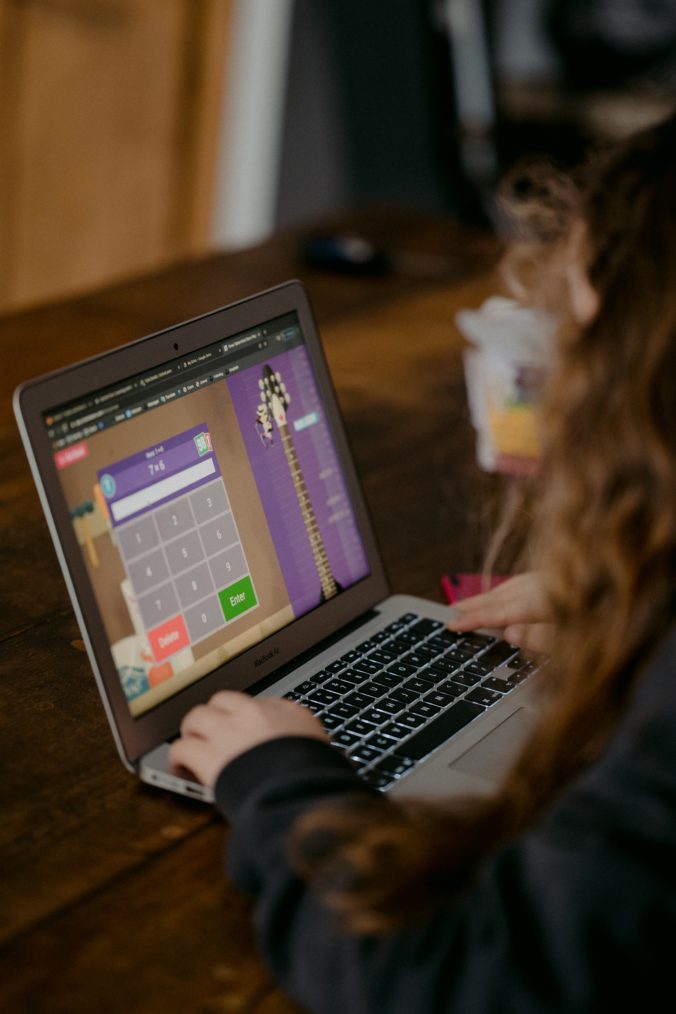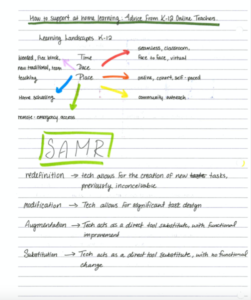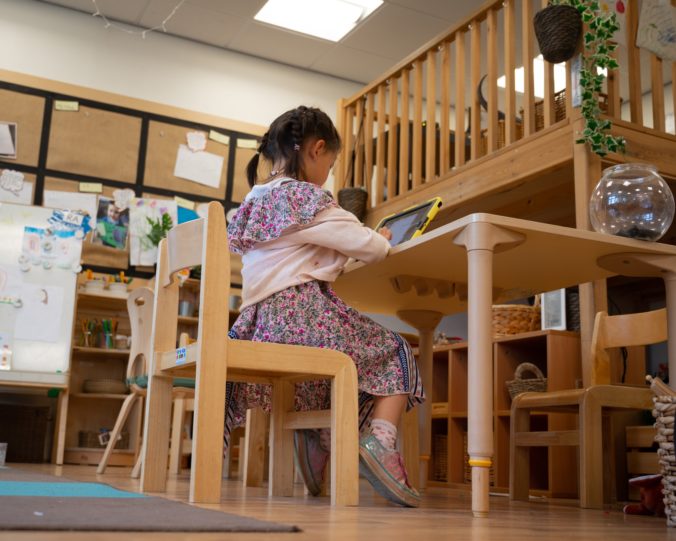Digital Equity and Perspective Pod Project
Kate McGowan and Carly Heemskerk
Part 1: Persona
Please take a look at our mind map chart of our Persona!
Persona
Part 2: Pitch
We have created a pitch that highlights the steps we would take to create a safe learning environment, where Bob can be successful. We decided that Bob would be best suited in a blended learning environment where he is able to learn asynchronously and synchronously, online and face to face. This would allow Bob to learn at his own pace and with choices that would personalize and ultimately optimize his learning experience. Roberts et al. share that blended environments have a “higher level of effectiveness than fully online or fully face-to-face environments. In addition, they found that when online courses are either teacher directed or contain a great deal of peer-to-peer support, the effectiveness of the approach is greater than courses that use a purely independent study (2018, p.539)”. To provide a better idea of what this would look like, here is an example lesson that we would share with Bob in a blended learning setting (Example Lesson). This lesson plan was created based on the Universal Design for Learning (UDL) Guidelines and it has been aimed to provide multiple means of engagement, representation and expression. We know that UDL “supports, and challenges, and maintains high achievement expectations for all students, including students with disabilities and students who are limited english proficient. (Basham et al., 2018, pp. 477 – 78); blended learning is a great opportunity to put UDL into practice because it is so flexible.
In their article, Basham et al. describe a series of studies which aim to study the effects of utilizing UDL in the classroom. One Study stood out to us in particular as it occurred at the middle school level and looked at increasing engagement for students with learning disabilities. This study UDL in the Middle School Science Classroom: Can Video Games and Alternative Text Heighten Engagement and Learning for Students With Learning Disabilities, followed approximately 60 middle school students with learning disabilities as they rotated their use of traditional learning materials with alternative games and texts (based off of UDL) between science units. This allowed students to engage in multiple means of expression and representation and did report an increased level in student engagement (Basham et al., 2018). This study replicates the ideas that we had to support our student, Bob. We aim to encourage his learning and the achievement of his goals through positive engagement and learning activities. We believe that a learning program where he is able to explore topics through familiar and enjoyable means of expression and representation will ultimately encourage understanding, motivation, and learning.
In response to Selwyn’s article “Online Learning: Rethinking teachers’ ‘digital competence’ in light of COVID-19” (2020) we sought to provide our student with as much support as possible throughout his learning. As Selwyn describes the importance of providing support academically and emotionally for students during these times, we would be sure to provide Bob with maximum support such as web chats or video calls to check in and see where and if help is needed as well to help him keep on track. This can be seen in the Handy Hints! section of our example lesson and would be expanded upon if this learning plan were to carry over during the COVID-19 period.
Universal Design for Learning Considerations
Multiple Means of Engagement – Checkpoint 7.1
“Optimize individual choice and autonomy”
Roberts et al. (2018) confirm the importance of engaging their students by stating that “educators need to promote students’ engagement in their own learning and the various environments in which it occurs”(p. 540). By providing Bob with various options to engage in the project, he is more likely to get engaged and finish with a sense of accomplishment. We provided activities that span through difficulty level and this will provide the option of challenging himself in a safe environment because if he runs into a problem he knows he can choose one of the easier options.
Multiple Means of Representation – Checkpoint 2.5
“Illustrate through multiple media”
Bob struggles with reading due to dyslexia so it is crucial we provide him with different options as opposed to just words. In our example lesson we used words, pictures and a voice over to help Bob follow along in whatever way he chooses.
Multiple Means of Expression and Action – Checkpoint 5.1
“Use multiple media for communication”
We provided Bob with options to supplement his prior readings in a way that interests him. For example, we allowed Bob the chance to communicate his new knowledge using videos, drawings, pictures, words or a blend of all these.
We understand that Bob and his family are dealing with digital equity issues at home and we kept this in mind when creating this lesson plan. Bob has access to a device and to wifi, however, due to his large family he does not have access throughout the whole day. This requires us, as educators, to plan ahead and be ready to answer Bob’s questions in the short time we have together. Additionally, we provided work that can be done at a pace that works for the students and that can be done without using digital resources. Although this specific lesson plan is asynchronous, it provides opportunities for Bob to interact with his classmates and demonstrate his work if he chooses to. As we shared in our mind map, Bob is extremely sociable and therefore, relationships in an online learning environment are crucial in order for Bob to be successful and happy.
Expanding upon providing multiple means for engagement, we are giving Bob autonomy by allowing him to work through this project at his own pace; however, the checklist will provide structure and support to ensure he does not fall behind or get confused. We believe that our pitch will allow Bob to feel like he is in control of his own learning and provide him with a sense of responsibility. Bob would be much more successful in this new blended learning environment because it offers him support when he needs it, however, it also provides him with autonomy to work at his own pace. Support in a blended learning environment can come from many different people; it is not only just the teacher responsible for sharing the knowledge. Online learning opens many new doors for students because it is “based on the respect of individual differences; it emphasizes the individual learner’s growth within today’s world; it changes the role of the teacher to an indirect influence thus contrasting to an older model that emphasizes the direct role of the teacher…”(Roberts et Al., 2018, p. 529). Blended classrooms provide more opportunities for students to learn from their peers and collaborate with each other in new ways. Ultimately, this provides the teacher with more time to help students that are struggling in the same ways that Bob is!
References:
Basham, J.D., Blackorby, J., Stahl, S. & Zhang, L. (2018) Universal Design for Learning Because Students are (the) Variable. In R. Ferdig & K. Kennedy (Eds.), Handbook of research on K-12 online and blended learning (pp. 477-507). Pittsburgh, PA: Carnegie Mellon University ETC Press.
CAST (2018). Optimize Individual Choice and Autonomy. Universal Design for Learning Guidelines version 2.2. Retrieved from http://udlguidelines.cast.org/engagement/recruiting-interest/choice-autonomy
CAST (2018). Use Multiple Media for Communication. Universal Design for Learning Guidelines version 2.2. Retrieved from http://udlguidelines.cast.org/action-expression/expression-communication/use-multimedia
CAST (2018). Illustrate through Multiple Media. Universal Design for Learning Guidelines version 2.2. Retrieved from http://udlguidelines.cast.org/representation/language-symbols/illustrate-multimedia
Common Sense Video. (n.d.) We the Digital Citizens. Common Sense Education. Retrieved from: https://www.commonsense.org/education/videos/we-the-digital-citizens
Flipgrid [Web page]. (n.d). Retrieved from: https://help.flipgrid.com/hc/en-us/articles/360007460474-Getting-Started-Educators
Giarlia, A. (June 17, 2020). The Benefits of Blended Learning. TeachThought. Retrieved from: https://www.teachthought.com/technology/the-benefits-of-blended-learning/
Kahoot [Web page]. (n.d). Retrieved from: https://kahoot.com/schools/how-it-works/
Roberts, V. , Blomgren, C. Ishmael, K. & Graham, L. (2018) Open Educational Practices in K-12 Online and Blended Learning Environments. In R. Ferdig & K Kennedy (Eds.), Handbook of research on K-12 online and blended learning (pp. 527–544). Pittsburgh, PA: Carnegie Mellon University ETC Press.
Selwyn. N. (2020). Online learning: Rethinking teachers’ ‘digital competence’ in light of COVID-19. [Weblog]. Retrieved from: https://lens.monash.edu/@education/2020/04/30/1380 217/online-learning-rethinking-teachers-digital-compet ence-in-light-of-covid-19
Texthelp. (2018). Read&Write for Google Chrome – A how to guide for students [Video file] Retrieved from: https://www.youtube.com/watch?v=YJ5N1BQc0bc
Woodfine, B.P., Baptista Nunes, M., Wright, D.J. (April 2008). Text-based synchronous e-learning and dyslexia: Not necessarily the perfect match! Computers and Education Vol.50, Issue 3. P. 703-717. Retrieved from: https://www.sciencedirect.com/science/article/abs/pii/S0360131506001217



